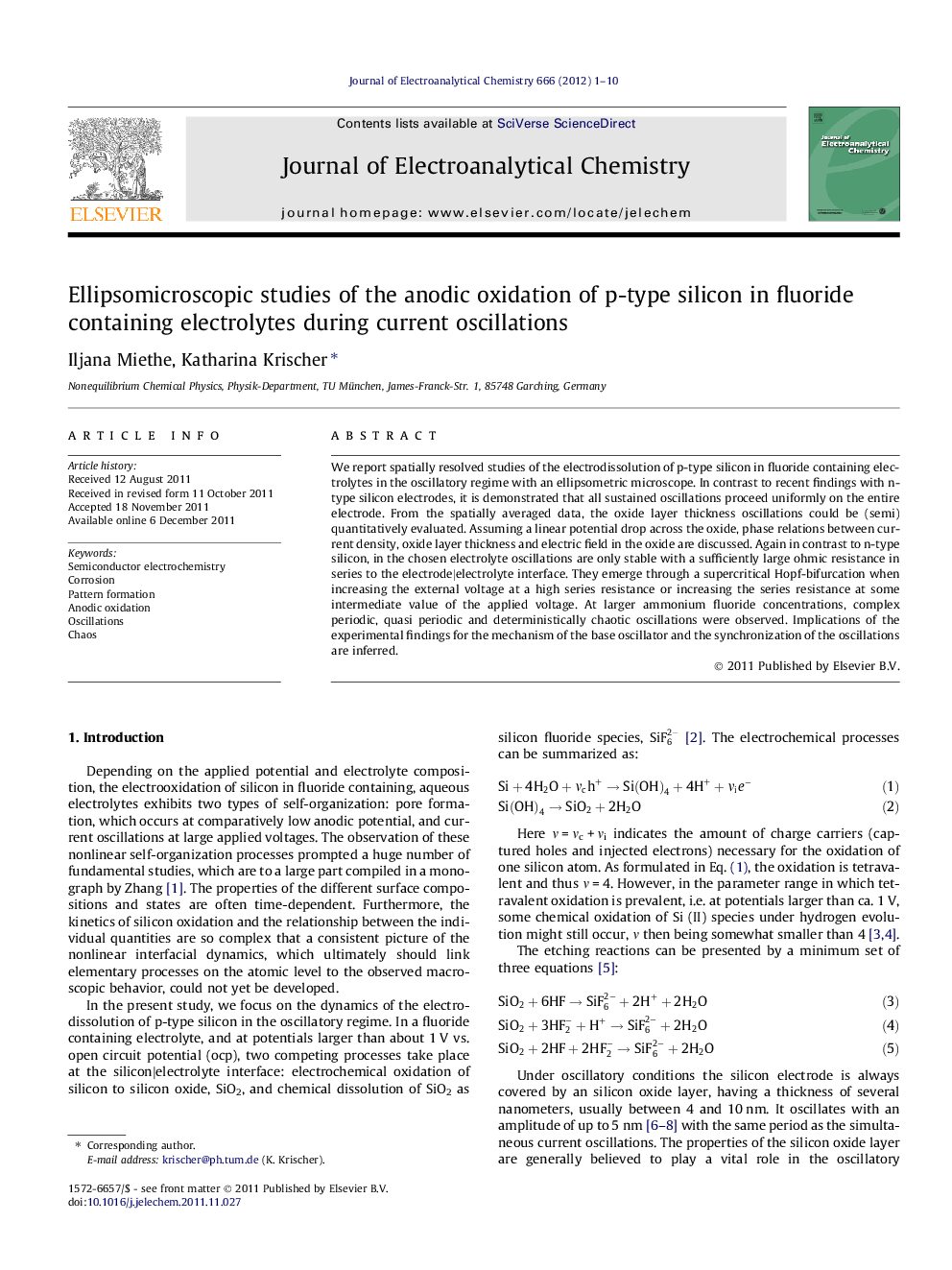| Article ID | Journal | Published Year | Pages | File Type |
|---|---|---|---|---|
| 219366 | Journal of Electroanalytical Chemistry | 2012 | 10 Pages |
We report spatially resolved studies of the electrodissolution of p-type silicon in fluoride containing electrolytes in the oscillatory regime with an ellipsometric microscope. In contrast to recent findings with n-type silicon electrodes, it is demonstrated that all sustained oscillations proceed uniformly on the entire electrode. From the spatially averaged data, the oxide layer thickness oscillations could be (semi) quantitatively evaluated. Assuming a linear potential drop across the oxide, phase relations between current density, oxide layer thickness and electric field in the oxide are discussed. Again in contrast to n-type silicon, in the chosen electrolyte oscillations are only stable with a sufficiently large ohmic resistance in series to the electrode∣electrolyte interface. They emerge through a supercritical Hopf-bifurcation when increasing the external voltage at a high series resistance or increasing the series resistance at some intermediate value of the applied voltage. At larger ammonium fluoride concentrations, complex periodic, quasi periodic and deterministically chaotic oscillations were observed. Implications of the experimental findings for the mechanism of the base oscillator and the synchronization of the oscillations are inferred.
► Oscillations during the electrodissolution of p-Si are spatially uniform. ► Determination of the oxide layer thickness gives insight into the oscillation mechanism. ► There are two different types of oscillations following different mechanisms. ► Onset of the small amplitude oscillations occurs through a Hopf bifurcation. ► The picture of local oscillatory domains is not in line with the presented results.
